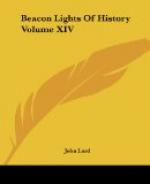And one region yet remains to be considered, the scattered coasts and islands that owned the Greek speech, and that created the Greek civilization. It is not the Greece of the Parthenon and Pericles that we wish to discover, for that we fairly know; but the arts and the history of those earlier Greeks and Trojans that Homer tells of, the age of Agamemnon and Ulysses, of Helen and Hector and Priam, and of the yet earlier tribes that sailed the Aegean, and settled the Mediterranean islands, and sent their ships to the Egyptian coasts, and sought golden fleeces on the Euxine Sea. All about the coast of Asia Minor they lived, while that Hittite power was ruling the interior; and, intermixed with Phoenician trading-posts, they held the great islands of Crete and Cyprus and the shores of Sicily and Italy. What shall we call them? Were they Dorians, or Heraclidae, Achaeans or Pelasgi? Were they of the same race as the mysterious Etruscans, or shall we name them simply Mycenaeans, as we call the art Mycenaean that ruled the islands and coasts down to the Homeric age, and we know not how many centuries earlier, but certainly as far back as the conquering period of the Eighteenth Egyptian Dynasty of Thothmes? Their soldiers and merchants and their fine vases are pictured on the walls of Egypt, and their pottery has long been studied; but we knew little of them until Dr. Schliemann, the Greek merchant who achieved wealth in the United States, bravely opened the great ruins of Troy, in the full patriotism of his assurance that Homer’s story of the Trojan war was history as well as poetry. As he found one burnt and buried city under another,—for many times was Troy destroyed,—and extended his investigations to Tiryns and other ancient cities, one volume of splendid research followed another, until the trader had compelled the unwilling scholar to confess that he must dig for both history and art. To be sure, his interpretations were quite too literal at first, but the whole world of classical scholarship has learned from him the new method of research. Splendid have been the results. If we are not sure which stratum represents the city of Priam, we do learn how the people lived, and how fine was their work in silver and gold, and how slight their knowledge of letters. Dr. Schliemann has now a multitude of imitators. France and Germany and England and the United States each maintain a school of archaeology in Athens, and each conducts careful explorations. Our American School lost to the French, for lack of money at the right time, the chance to explore Delphi, but it has carried on careful explorations at Corinth and other places. How wonderful was the discovery, not long ago, of a shipload of bronze and marble statues wrecked while being transported as spoil of war from Corinth to Rome!




